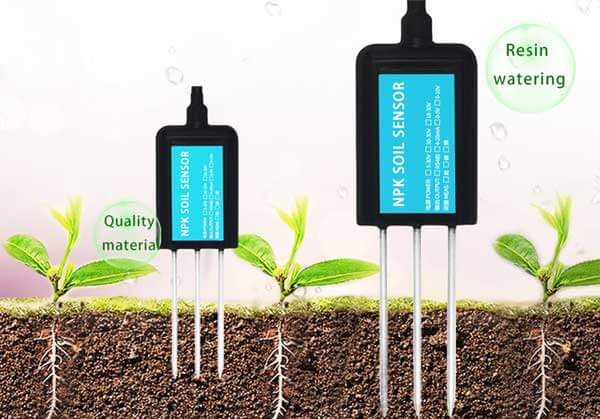Agriculture is heavily dependent on efficient irrigation practices to ensure optimal crop growth and yield. Traditional methods of irrigation, such as time-based or visual assessment, often result in inefficient water usage and can lead to overwatering or underwatering of crops. This not only wastes precious water resources but also affects crop productivity and increases the risk of soil degradation. In recent years, soil sensors have emerged as valuable tools for improved irrigation management. In this article, we will explore the benefits and applications of soil sensors in enhancing irrigation practices.

Monitoring Soil Moisture:
One of the primary functions of soil sensors is to monitor soil moisture levels. These sensors provide real-time data on the amount of water present in the soil, enabling farmers to determine when and how much water needs to be applied. By accurately assessing soil moisture content, soil sensors help prevent both overirrigation and underwatering. Overirrigation can lead to leaching of nutrients, waterlogging, and increased energy costs. Underwatering can cause water stress in plants, leading to reduced yield and quality. Soil moisture sensors, such as capacitance or TDR sensors, can be installed at different depths in the soil profile to capture the moisture distribution and guide irrigation decisions accordingly.
Determining Soil Water Holding Capacity:
Soil sensors also play a crucial role in determining the water-holding capacity of the soil. This parameter indicates the soil’s ability to retain water and release it gradually to plant roots. By measuring the volumetric water content at field capacity and wilting point, soil sensors provide valuable information on the available water for plant uptake. This data helps farmers optimize irrigation scheduling and avoid water stress conditions. Additionally, soil sensors can detect changes in the soil’s hydraulic conductivity, which is essential for assessing soil structure and permeability, preventing compaction, and ensuring proper drainage.
Assessing Soil Temperature:
Soil temperature is another critical factor to consider in irrigation management. Different crops have specific temperature requirements for optimal growth and nutrient uptake. Soil sensors equipped with temperature probes can measure the soil temperature at various depths, allowing farmers to monitor temperature variations throughout the growing season. This information aids in determining the best time to irrigate, preventing frost damage, and optimizing nutrient availability. By integrating soil temperature data with other environmental parameters, such as air temperature and humidity, farmers can make informed decisions regarding irrigation timing and crop selection.
Monitoring Soil Nutrients:
In addition to moisture and temperature monitoring, soil sensors can also assess soil nutrient levels. These sensors utilize ion-selective electrodes (ISE) or electrochemical methods to measure the concentration of specific ions, such as nitrate, phosphate, potassium, and pH. By understanding the nutrient status of the soil, farmers can adjust their irrigation practices and implement targeted fertilization strategies. This approach helps prevent nutrient leaching, reduces fertilizer waste, and improves nutrient use efficiency. Furthermore, soil sensors can detect nutrient imbalances or deficiencies, enabling timely corrective measures to optimize crop health and productivity.
Integrating Sensor Data with Smart Irrigation Systems:
Advancements in technology have enabled the integration of soil sensor data with smart irrigation systems. These systems utilize real-time sensor readings to automate irrigation processes based on crop water requirements and soil conditions. By connecting soil sensors to weather stations and moisture-based controllers, farmers can achieve precise irrigation scheduling and optimize water usage. Smart irrigation systems can adjust irrigation frequency, duration, and volume according to real-time data and preset thresholds, reducing water waste and energy costs. Furthermore, remote monitoring capabilities allow farmers to access sensor data and control irrigation systems from anywhere, enhancing convenience and efficiency.

Conclusion: Soil sensors have revolutionized irrigation practices by providing accurate and timely data on soil moisture, temperature, nutrient levels, and water-holding capacity. These sensors help farmers make informed decisions regarding irrigation timing, duration, and quantity, leading to improved water efficiency, crop yield, and resource management. By integrating soil sensor data with smart irrigation systems, farmers can automate their irrigation processes, optimize water usage, and reduce environmental impact. As technology continues to advance, soil sensors are becoming more affordable, user-friendly, and accessible to a wider range of farmers. Investing in soil sensors for improved irrigation is a promising step towards sustainable agriculture and responsible water management.
